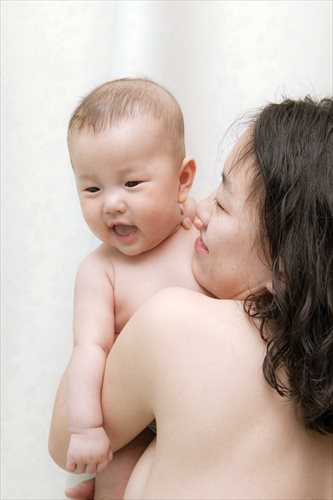

Antiretroviral therapy can reduce the risk of mother-to-child transmission of HIV from around 40 percent to less than 5 percent. Photo: Li Hao/GT
Unlike most mothers, when 22-year-old Sun Qiu heard the first whimpering mewl of her newborn child, her sense of joy was tempered by a gnawing anxiety.
Sun is HIV-positive. She contracted the disease from her own mother, one of the victims of the AIDS epidemic that ravaged China's rural counties in the 1990s due to unhygienic blood collection. Her home from an impoverished village in Henan Province, was one of areas worst-affected.
Sun's mother and father have since passed away as a result of the disease. Her husband, mother-in-law and father-in-law are all HIV positive.
To reduce the chances of her newborn son from befalling the same fate, Sun has throughout her pregnancy been taking an intensive course of antiretroviral medication to prevent mother-to-child transmission (PMTCT) of the disease.
The treatment is known to reduce the likelihood of mother-to-child transmission of HIV from between 25 and 40 percent to less than 5 percent.
"I had to take medication every day of my pregnancy," said Sun. "The results of all my antenatal examinations showed that the child was healthy."
Sun fetched her infant boy, who was tightly wrapped in a quilt.
"He's a bit skinny, but he looks healthy," says Sun again. "It's like a dream come true."
The truth behind the numbers
China introduced free PMTCT treatment for all HIV-positive pregnant women in 2003, and in 2010, nearly 74 percent of the 2,622 known HIV-positive pregnant women who gave birth in the country were treated with antiretroviral therapy, according to UNAIDS' 2012 China AIDS Response Progress Report.
This figure is marginally better than the 67 percent of around 240,000 HIV-positive pregnant women who received PMTCT treatment globally in 2013, according to a report World Health Organization (WHO) published this July.
But Zhang Bin, a doctor at Beijing Children's Hospital who has administered antiretroviral therapy to more than 100 HIV-positive pregnant women, said that the figures did not account for the swathes of pregnant women in China who had not registered as being HIV-positive, due to ignorance, isolation and fear of discrimination.
Zhang estimated that the actual proportion of HIV-positive pregnant women in China who received antiretroviral treatment to PMTCT was much lower.
"Most [HIV-positive pregnant women] are from isolated mountain areas and rural areas. Most lack even a basic understanding of AIDS, and live in difficult economic circumstances," said Zhang.
Because of the stigma that comes with having HIV/AIDS in China, said Zhang, many of these women give birth outside of the system, despite mandatory HIV screening policies for pregnant women in a number of provinces.
Widespread ignorance
Sun said that public campaigns informing women about PMTCT did not reach her village.
She gave birth to a girl three years ago without undergoing antiretroviral therapy.
"I was too young to know anything about safely giving birth to a child. We just knew that we wanted a child, whether he or she would be born with AIDS," said Sun.
Sun's daughter passed away as a result of a heart disease when she was two months old, without being known whether she was HIV-positive or not.
"Afterward, I heard about PMTCT from another pregnant woman who was also HIV-positive. But she couldn't explain to me how it worked, so I was suspicious about it."
Nevertheless, when Sun fell pregnant this year, she immediately sought advice from a doctor at a local hospital.
Copyright ©1999-2018
Chinanews.com. All rights reserved.
Reproduction in whole or in part without permission is prohibited.